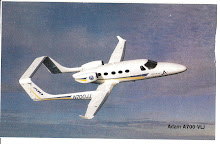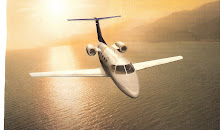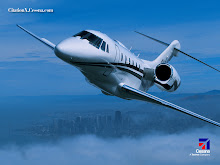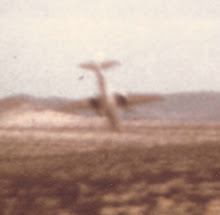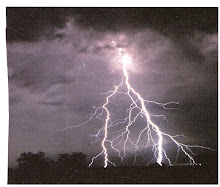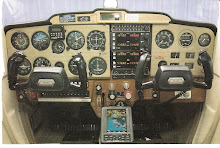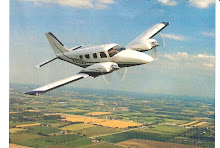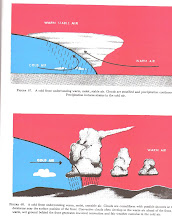How To Become A Pilot
(Private Pilot Certificate)
By
Robert Shaw
So you’ve finally made the decision – you want to become a pilot. Entry to the flying world can be long and arduous, but it can be short and reasonably easy depending on your approach to the matter. Whether you are young and a student in school, college or university, or work for a living, or are in the middle-age bracket wanting to “do your thing” – you can do it!
I learned to fly in a government-sponsored program by attending a ground school, and flying before and after a full-time job, years ago.
Aviation is becoming a big world of people, airplanes, airlines, flying schools, electronics, mechanics, technicians, computers, etc. (Several schools such as Emery-Riddle, Langa Air, and Daniel Webster College, and others, offer degrees in aviation management). You can be part of this world, if you know how and where to begin.
Aviation is expanding by leaps and bounds, and the outlook for pilots, mechanics, technicians, and other positions couldn’t be better. The Boeing Aircraft Co. forecasts a 2.8 trillion market for new commercial airplanes over the next 20 years. This equates to a forecasted 5% annual increase in passenger traffic, and a 6.1% annual increase in air cargo traffic. Boeing Vice President of Marketing, Randy Tinseth, projects delivery of passenger and cargo airplanes on the order of: 3,700 regional jets (90 seats), 17,650 single-aisle airplanes (200-400 seats), 6, 290 twin-aisle airplanes (200-400 seats, 960 airplanes 747-size or larger (more than 400 seats). Boeing is focused on offering new airplanes that burn less fuel and spend less time in maintenance, allowing airlines to maximize operating efficiencies, lower their costs, and increase profitability – while providing the nonstop, point-to-point flights and frequency choices passengers want.
So there is and will be a great need for pilots – and right now that is a concern – a separate subject to be covered. And we’re not talking just male pilots – women make good pilots, too. In fact, even now we have women airline Captains and First Officers. As of June 2007, AOPA (Aircraft Owners and Pilots Association) reported 412,002 pilots in General Aviation (GA), 70% of which are certificate holders – no doubt, mostly Private and Commercial pilots.
So let’s get started. The FAA (Federal Aviation Administration) is charged with promoting and regulating aviation – a somewhat opposing task. The regulating task is where we begin with the Federal Air Regulations (FARs) - requirements and procedures for pilots. The FARs is a volume of 1,021 page document, combined with the Airmens Information Manual (AIM) – consisting of Parts, Subchapters, and paragraphs, and a Pilot-Controller glossary, and an index. Frankly, it’s a case of hunt, and hunt some more, to find what we are looking for. And you must learn in the FAA language may is used in the imperative sense and acronyms are used throughout the volume, plus the fact that the rules and procedures are in constant change.
Private Pilot (PP) certification can be accomplished in a single-engine (SE) or Multi-engine (ME) airplane – that is, you can learn to fly and take a certification test in the airplane you have chosen for your training. You must have at least a 3rd class medical certificate (although you can have a First class or 2nd class certificate, if you qualify).
The student pilot can either sign up for a qualified training school, ground and flight school, or get a qualified Instructor and qualify for the aeronautical knowledge requirement. Usually, your own city airport can supply you with a qualified Instructor and available training airplanes.
Learning to fly is all about aeronautical knowledge, becoming proficient in an airplane, and chalking up flight experience. This is detailed by the FARs under Part 61, Certification of Pilots and Instructors. Under Subpart E – Private Pilots, paragraph 61.103 lists the Eligibility Requirements as follows:
a. Be at least 17 years of age.
b. Read, speak, and understand the English language.
c. Receive a logbook endorsement from an authorized Instructor who conducted the training or reviewed the persons home-study on aeronautical knowledge.
d. Be certified that you are prepared for the knowledge test.
e. Pass the knowledge test on the aeronautical areas listed under 61.105 (b) – 13 items.
f. Receive flight training and a logbook endorsement from an authorized Instructor.
g. Meet the aeronautical experience requirements.
h. Pass a practical test on the areas of operation listed in 61.107 (preflight preparation, preflight procedures, takeoffs, landings, etc.)
i. Comply with 61.109 Aeronautical Experience – 40 hours of flight training from an authorized Instructor; 10 hours of solo flight training in the areas of operation listed in 61.107 (b) & (i) of this Part, and the training must include at least 3 hours crosscountry (x-c) flight training in a SE airplane; 3 hours night training in a SE airplane which includes one x-c flight of over 100 miles total distance; 10 takeoffs and landings to a full stop, from a landing pattern; 3 hours of flight training in a SE airplane on the control and maneuvering of an airplane solely by reference to instruments, including straight and level flight, constant airspeed climbs and descents, turns to a heading, recovery from unusual flight attitudes, radio communications, and the use of navigation systems/facilities and radar services appropriate to instrument flight; 3 hours of flight training in preparation for the practical test in a SE airplane, which must have been performed within 60days preceding the date of the test; and 10 hours of solo time in a SE airplane, consisting of at least 5 hours of solo x-c time; one solo x-c flight of at least 150 nautical miles total distance with full-stop landings at a minimum of three points, and one segment of the flight consisting of a straight-line distance of at least 50 nautical miles between the takeoff and landing locations; and three takeoffs and three landings to a full stop (with each landing involving a flight in the traffic pattern) at an airport with an operating control tower.
The average for earning a PP certificate is about 65 hours of flight time. The Piper Cherokee, the Cessna 150/152, and the Cessna 172 are typical training airplanes, although other airplanes are used. Use of an airplane for training usually depends on its power and the consumption of fuel.
The cost of renting airplanes for VFR operations may run $65 to $82/hour, dry.
The present cost of 100 octane fuel is $4.81/gallon. Instructor fees are additional, perhaps $6,500 to $7,500 for flight training, including ground school, books, materials, and examiner fees.
I would recommend that all applicants read the appropriate paragraphs of the FARs from the Volume itself or from a training school curricula since the requirements and procedures are so detailed, and make references from one paragraph to another. In addition, FAA may make a change over time.
The appropriate paragraphs concerning PP certification are:
61.102 Applicability
61.103 Eligibility
61.105 Aeronautical Knowledge
61.107 Flight Proficiency
61.109 Aeronautical Experience
Of the 600,000 plus pilots in the U.S. today, more than 247,000 hold Private Pilot certificates. You can join us. Good Luck, and don’t let that first bounce on your solo landing throw you. The next landing will be better.
______________________

